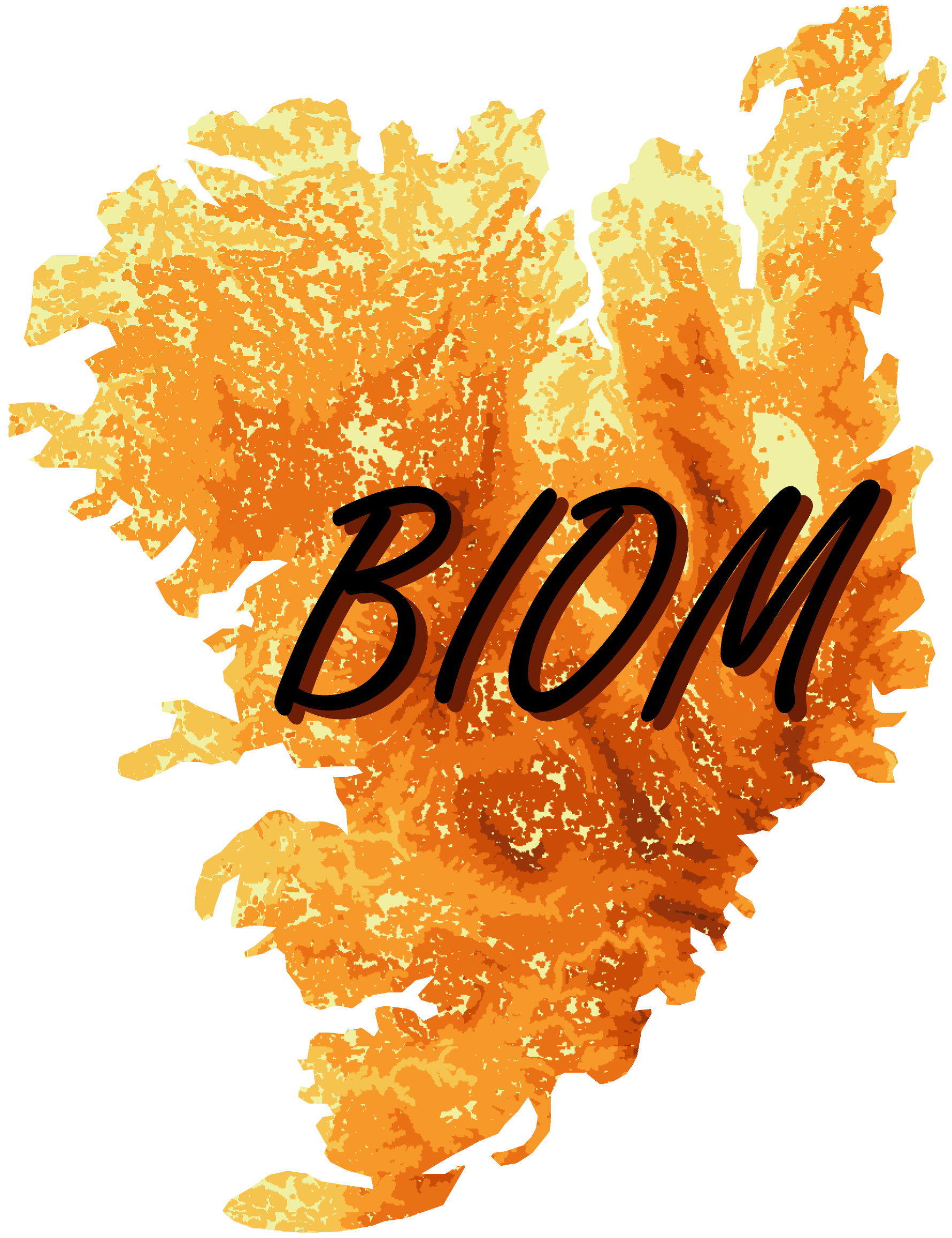Le Lescuraeetum mutabilis Greter ex Wilm. 1962 dans le Massif central
DOI :
https://doi.org/10.52497/biom.v2i1.271Mots-clés :
Lescuraeetum mutabilis, Massif central, Lescuraea saviana, hêtraies subalpines, Acerion pseudoplatani, association cortico-humicoleRésumé
Le Lescuraeetum mutabilis Greter ex Wilm. 1962 (Neckeretea complanatae Marst. 1986) est une association corticole acidiphile colonisant la base des troncs tortueux des vieux hêtres, à l’étage subalpin, ou au montagnard supérieur, au sein de communautés trachéophytiques relevant respectivement de l’Acerion pseudoplatani (Oberdorfer 1957) Rameau in Rameau, Mansion & Dumé 1993 nom. nud., du Fagion sylvaticae Luquet 1926 (pour les communautés neutrophiles) ou du Luzulo luzuloidis-Fagion sylvaticae Lohmeyer & Tüxen in Tüxen 1954 (pour les communautés acidiphiles). Cette association substratohygroclinophile, psychrophile, strictement inféodée aux forêts alticoles, est caractérisée dans le Massif central par la présence de 4 espèces : Lescuraea saviana, L. mutabilis, Sciuro-hypnum reflexum et Sanionia uncinata. La haute fréquence de Lescuraea saviana est une originalité régionale de l’association, considérée comme insuffisante pour définir une sous-association, mais permettant cependant l’individualisation d’une race géographique méridionale de cette association largement répandue dans les massifs montagneux du domaine tempéré européen. Cette association cryophile présente certainement une grande sensibilité vis-à-vis de l’augmentation des températures et des modifications du régime de précipitation et possède un fort enjeu conservatoire.
Références
Bardat J. & Hauguel J.-C., 2002. Synopsis bryosociologique pour la France. Cryptogamie, Bryologie, 23 : 279-343.
Braun-Blanquet J., 1964. Pflanzensoziologie. Grundzüge der Vegetationskunde. 3e éd., Springer, Wien-New York, 865 p.
Chabrol L. & Reimringer K., 2011. Catalogue des végétations du Parc naturel de Millevaches en Limousin. Parc naturel régional de Millevaches, Conservatoire botanique national du Massif central, 240 p.
Choisnet G. & Mulot P.-E., 2008. Catalogue des végétations du Parc naturel régional des Monts d’Ardèche. Conseil régional Rhône-Alpes, Conservatoire botanique national du Massif central, 263 p.
Dierssen K., 2001. Distribution, ecological amplitude and phytosociological characterization of European bryophytes. Bryophytorum Biliotheca, 56 : 1-289.
Gargominy O., Tercerie S., Régnier C., Ramage T., Dupont P., Daszkiewicz,P. & Poncet L., 2020. TAXREF v14, référentiel taxonomique pour la France : méthodologie, mise en œuvre et diffusion. Muséum national d’Histoire naturelle, Paris. Rapport UMS PatriNat (OFB-CNRS-MNHN), 63 p.
Greter P.F., 1936. Die Laubmoose der oberen Engelbergtales. Diss. Freiburg/Schweiz, 312 p. Engelberg.
Hodgetts N.G., Söderström L., Blockeel T.L., Caspari S., Ignatov M.S., Konstantinova N.A., Lockhart N., Papp B., Schröck C., Sim-Sim M., Bell D., Bell N.E., Blom H.H., Bruggeman-Nannenga M.A., Brugués M., Enroth J., Flatberg K.I., Garilleti R., Hedenäs L., Holyoak D.T., Hugonnot V., Kariyawasam I., Köckinger H., Kučera J., Lara F. & Porley R.D., 2020. An annotated checklist of bryophytes of Europe, Macaronesia and Cyprus. Journal of Bryology, 42 : 1-116.
Hübschmann A.v., 1986. Prodromus der Moosgesellschaften Zentraleuropas. Bryophytorum Bibliotheca, 32 : 1-413.
Hugonnot V., 2010. Les bryophytes, de précieux indicateurs encore trop peu connus en région Rhône-Alpes. Bulletin de la Société Linnéenne de Lyon, HS, 2 : 195-200.
Hugonnot V., 2020. Une association bryophytique nouvelle, endémique du puy de Dôme (Puy-de-Dôme, Auvergne-Rhône-Alpes) : le Gymnomitrio corallioidis-Barbilophozietum sudeticae. BIOM, 1 : 12-20.
Hugonnot V. & Celle J., 2015. Première liste rouge des bryophytes d’Auvergne. Evaxiana, 1 : 5-29.
Issler E., 1924. Les Associations végétales des Vosges méridionales et de la plaine rhénane avoisinante. Les Forêts, A: Les associations d’arbres feuillus. Bulletin de la Société d’Histoire Naturelle de Colmar, N.S., XVII (1922 - 1923) : 1-65.
Klesczewski M., Pouget L., Lecoq M., Oudot M., Gautier K. & Bossaert M., 2020. Contribution à la connaissance de l’étage subalpin dans le massif du mont Aigoual (Gard, Lozère) : synthèse bibliographique, délimitation, caractérisation floristique, et comparaison à l’échelle du Massif central. BIOM, 1 : 49-68.
Marstaller R., 2006. Syntaxonomischer Konspeckt der Moosgesellschaften Europas und angrenzender Gebiete. Haussknechtia Beiheft, 13 : 1-192.
Schlüsslmayr G., 2005. Soziologische Moosflora des südöstlichen Oberösterreich. Stapfia, 84 : 1-695.
Thébaud G., Roux C., Bernard C.-E. & Delcoigne A., 2014. Guide d’identification des végétations du nord du Massif central. Presses Universitaires Blaise Pascal, 274 p.



